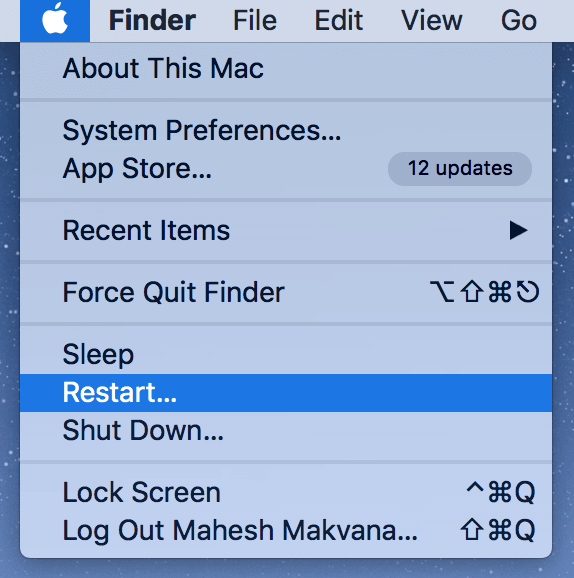

- #How to force empty trash on mac yosemite how to#
- #How to force empty trash on mac yosemite mac os x#
- #How to force empty trash on mac yosemite update#
- #How to force empty trash on mac yosemite software#
- #How to force empty trash on mac yosemite trial#
Give your new Aperture 3.6 a trial run and once you’re satisfied, you can safely delete Aperture 3.4.5 from your trash bin.
#How to force empty trash on mac yosemite update#
Aperture library to 3.6 agree and wait for the update process to complete
When prompted to update the older 3.4.5. Hold down the Option key and click Aperture to launch it and when prompted select your Aperture library to re-link your existing library to Aperture 3.6. Upon completion, you should now be the proud owner of Aperture 3.6!! Which is… compatible with Yosemite!!. Launch App Store and click on the Purchases tab, find the Aperture application in the list (assuming Aperture is a paid app) and click “Install”. Drag the Aperture application into the trash but don’t empty the trash (just in case). 

#How to force empty trash on mac yosemite how to#
Here’s how to force update Aperture from 3.4.5 that is incompatible with Yosemite to 3.6: All you see is the Aperture application icon with a no entry sign painted across it and even if you launch App Store you cannot find Aperture 3.6 update anywhere. The most common complaint is that Aperture cannot be updated once you’ve installed Yosemite. It just jumped a few versions ahead to 3.6. What needs to be done is to update Aperture from 3.4.5 to 3.6.
#How to force empty trash on mac yosemite software#
Gemini 2 is an advanced Mac cleaner software which helps you in keeping your Mac clean and organizing your files.

#How to force empty trash on mac yosemite mac os x#
Compatibility: Mac OS X Yosemite 10.10 and higher versions. Its only upon completion you realise that the last version of Aperture was 3.4.5 and now it does not work with Yosemite…. One of the best apps to remove duplicate files from Mac in 2022. You just hit the “update” button and finally gave in to installing Mac OS X 10.10, Yosemite on your Mac. Updated March 2021: Updated for latest macOS version.Its a chicken and egg scenario with Yosemite and Aperture. If you have any questions about local snapshots, drop them in the comments, and I'll help you out. If you delete old backups, you can never retrieve data from them if something were to go wrong while you aren't connected to your backup hard drive. Time Machine should work automatically to remove older backups as you need the storage space on your internal hard drive. Free up space on Mac: Any questions?īefore you decide to purge your local snapshots, be sure you really need to do this. When the time comes to replace your computer, consider our lists of the best MacBook and Mac desktop models.
Wait a few minutes for the local snapshots to delete. Open Time Machine Preferences from the Time Machine menu in the menu bar on your Mac. To disable local snapshots in Time Machine and remove them from your internal storage: It will also stop Time Machine from creating new snapshots. You can use a Terminal command that will disable Time Machine's local snapshot feature, which will delete all of the local snapshots on your internal hard drive. If you really need to delete those snapshots (which I don't recommend unless you desperately need that space), there is a way to purge local snapshots from your internal hard drive. That being said, everything doesn't always work properly, and you may find yourself out of storage space on your internal hard drive, and those snapshot backups won't go away. The program will then continue to replace the old snapshot with a new one until you free up space on your Mac's internal storage, at which point it will go back to saving weekly snapshots as long as space permits. If you then, say, download some large program and your internal hard drive plummets to below 10% (or less than 5GB of internal storage), Time Machine will delete all local snapshots except the most recent. If everything is working properly, Time Machine will automatically delete the oldest snapshot backups as soon as your internal hard drive has less than 20% of storage space left. How do I get rid of all these backups?įirst, let me preface this by saying that you shouldn't worry about those backups and all the space they are taking up. So, if you've been backing up your Mac for years with Time Machine, you could potentially have 100 GB of backups stored in your internal hard drive, as long as you have space for them. It keeps those weekly snapshots on your internal hard drive until you start to get low on storage. Time Machine makes one daily snapshot every 24 hours when you start up your MacBook. So why do you have a large number of backups taking up space on your MacBook's internal hard drive? Because of local snapshots.Īs soon as you set up Time Machine on your Mac laptop, local snapshots are created automatically. You need an external hard drive to set up and use Time Machine because that's where your backups are stored. Why do I have 100 GB of backups on my hard drive?








 0 kommentar(er)
0 kommentar(er)
